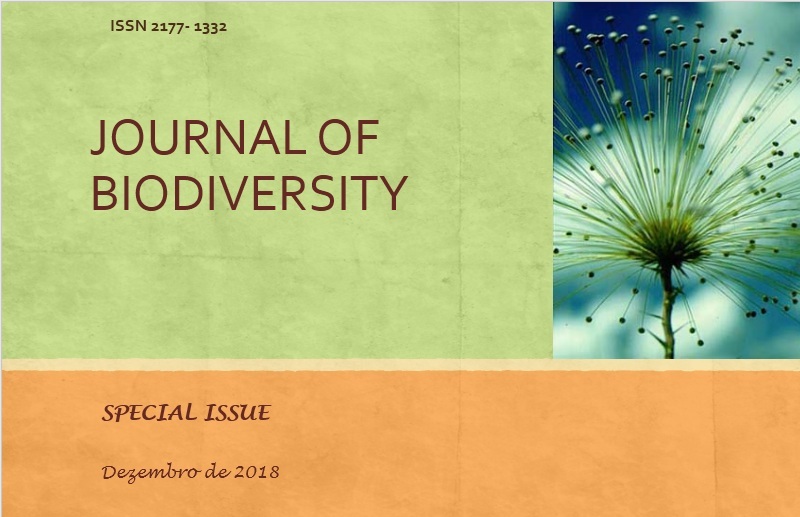STUDY OF THE FAMILY NITIDULIDAE (INSECTA: COLEOPTERA) IN THE FORESTED SAVANNA
Resumo
The modification of forest habitats results in changes in the biological order, affecting different groups of insects, which may cause ecological changes, such as the dominance and diversity of coleopterans. The Nitidulidae family presents diversified ecological habits and plays a fundamental role in the environment. The objective of the work presented was to study the diversity of the Nitidulidae species, in a fragment of forested savanna, from January to December 2013, in Cuiabá, Mato Grosso. Twenty-one pitfall traps with different concentrations of attractants were set up in a completely randomized design. The attractant utilized was ethyl alcohol in different concentrations. A total of 8,120 individuals were collected, distributed in six species. A percentage of 59,94% of individuals were collected during the rainy season and 40,06% during the dry season. The concentrations of 20° and 40° INPM, together, were responsible for 44.81% of the total individuals collected. The species Stelidota sp. with 38,31%, Lobiopa insulares Laporte, 1848 with 33,03% and Urophorus humeralis Fabricius, 1798 with 26,01%, were the most represented in number of individuals collected in all concentrations analyzed. It is concluded that the Nitidulidae family proved to be resilient in the forest savanna fragment.
Keywords: Savanna, pitfall, sap beetle, Lobiopa insularis, Urophorus humeralis.




